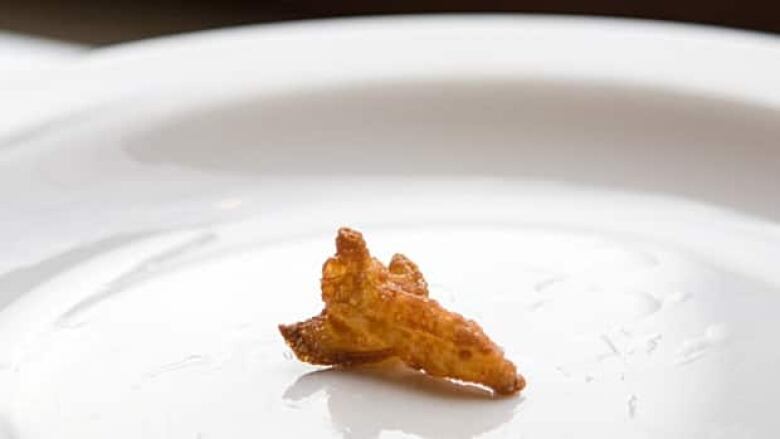3D printers create edible objects

An engineering lab and a culinary school have teamed up to construct novel edible objects with 3D printers that use pureed foods in placeof ink.
Miniature space shuttles made of ground scallops and cheese are among the masterpieces that had alreadybeen made using3D food printersdesigned by the computational synthesis laboratory at Cornell University in Ithaca, N.Y.
The lab is collaborating with the New York City-based French Culinary Institute tomake new ediblecreations through a project called fab@home.

"So far, we've printed everything from chocolate, cheese and hummus to scallops, turkey, and celery," Lipton told CBC Radio'sSpark in an interview that airedSunday.
Pastes made of different foods are squirted from nozzles inside the box-like printer, which carefully controls their position at all times.
"The process is pretty simple," Lipton said. "Just as ... your 2D printer puts droplets of ink onto a page to create an image, this draws lines of material on top of each other to create a 3D object."
Dave Arnold, director of culinary technology at the French Culinary Institute in Manhattan, said when people hear about the food printing technology they think of using it to make a 3D steak or other favourite food or of creating an impressive likeness on a birthday cake. But those aren't the kinds of applications that interest Arnold.
He is mostexcited about the possibility of creating textures and foods that have never been experienced before.
So far, he'smade interesting crispy corn snacks byhaving the 3D printerrandomly create squiggly patterns.
"I can imagine creating really interesting textures using meat with the same technique," he told Spark. "Imagine [a food] almost like a meatloaf that absorbs sauce like a sponge. That is cool much cooler to me than printing some ersatz steak."












_(720p).jpg)


 OFFICIAL HD MUSIC VIDEO.jpg)
.jpg)



























































































